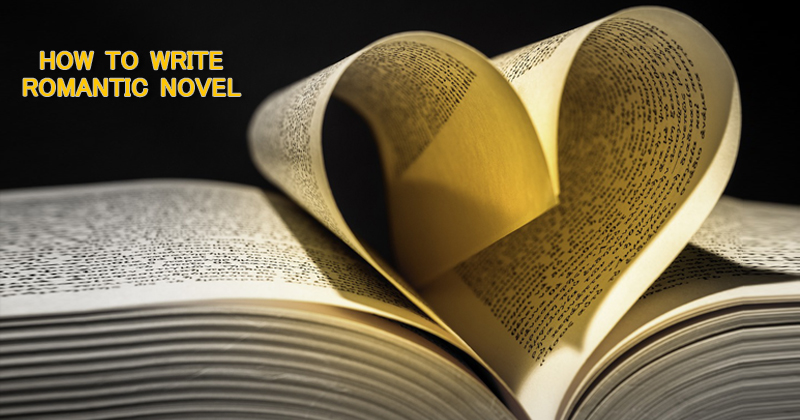
Romantic books have always captured our imagination. They contain the intrigue, intimacy, and basic human drama that keep readers glued. There was a time when the genre used to be read in secret, however, the romance genre today is having a huge moment with many mega-popular books around. So why not learn how to write a romantic novel of your own?
Frankly, even as love itself may be hard to explain, the process of writing about it is not. The tropes and techniques that one employs are key to this genre.
Here are the proven and time-tested steps on how to write a romantic novel:
1. Find your niche to write a romantic novel:
There’s no one right way to write about romance, it encompasses so many subgenres. Among the popular subgenres of romance include Contemporary, Fantasy, Historical, Young adult, Supernatural, Spiritual and Erotic.
You may be concerned that your writing won’t “fit” within the genre. Never let this come your way. All you have to do is just have to find the right niche. The best way to do that is by reading romance yourself! You may have already read quite a bit within a particular subgenre and you’re sure that’s where you fit in. But if not still, now’s the time to explore the many facets that romance has to offer.

2. Set the tone effectively:
The setting is a must in romance. Romance is mostly about escape and if the setting isn’t immersive enough, readers would lose interest in the story. The setting, in essence, is the place both reader and author come back to, time after time.
So what is a strong setting in romance?
Contemporary authors tend to have cozy, small-scale settings; quaint villages, college campuses, etc. There might be a local landmark where the main characters frequently meet such as a restaurant or a bookstore. If you’re sticking to the standard, have one of these ‘compact’ settings where people run into each other.
If you’re writing for a more specific subgenre, however, your setting could take on different turns. No matter where you have set your story set in, the most important thing is that it is immersive and feels believable.
3. Creating a strong main couple:
Romantic novel is absolutely a character-driven genre, so your main couple needs to hook the readers. The hero (or the male lead) and ‘the heroine’ (female lead) should be larger than life and still believable in the realm of the setting.
The hero: Writing a great romantic hero isn’t about chiselled good looks and dramatic gestures; it has more to do with emotional depth and vulnerability. Every Hero has a past that outlines his presence and his sense of life. By the end of the story, the hero should be a changed man, more evolved, more open, and much satisfied.
The heroine: The heroine, on her part, should have some challenges as well. In a common plot, the hero helps the heroine and vice-versa. A heroine should be just as strong a conception as the hero. In today’s writings, the trend is to make the heroine resilient with a mind of her own.
The heroine, for her part, should have some trouble as well. A common plot finds the hero helping the heroine (for instance, she’s struggling financially, so he gives her a job), only for the heroine to turn around and help him solve one of his problems (like getting over his ex-wife). Even if the heroine starts off timid and doubtful, throughout the story, she should gain the courage to stand up for herself.
To make the reading lasting, give both of them realistic motivations and flaws, usually tied into their backstory. This ensures that your main couple is realistic and engaging, so readers will root for them throughout the story.
4. Use tropes that have worked:
There are so many possible paths for your main couple to take. But here are just a few tried-and-true phenomenon that many romance authors have used successfully:
- Friends to lovers: work best when another big conflict or project is distracting one or both of the main characters, so they don’t get together until the very end.
- Friends/enemies to lovers: The couple knows each other, but they just don’t see each other that way. And changes progressively throughout the story.
- Enemies to lovers: are the perfect device for two characters who clash in some fundamental way. For example, one might be very Type A and the other more Type B (see: 27 Dresses). Or one is a hardworking single parent while the other is a spoiled rich bachelor/bachelorette who’s never had to work a day in their lives (see: Overboard).
- Going back to each other all over again: This trope involves the hero and heroine either being separated for a very long time, or one of them outright forgetting who the other one is due to amnesia, dementia, or some supernatural phenomenon. Then they choose each other all over again, hence proving that they’re well and truly soulmates.
It’s still so important to put your own twist to it. Insert unique elements to add intrigue, suspense, or just for pure entertainment.
5. Conceive intimate scenes creatively:

Intimate scenes are integral to writing romance. This doesn’t mean sex scenes necessarily. You have to craft all descriptions of physical intimacy with a light touch, and only after sufficient build-up, make your readers eagerly anticipate each encounter. Steer away from overwrought, cliché writing that can border on parody and may disappoint the readers.
6. Build strong secondary characters:
While the main couple is obviously where most of the action is, secondary characters are integral to a well-rounded romance. Secondary characters compliment the world of your romance novel. Friends, family, neighbours, co-workers, and even arch-enemies all contribute to making the story come alive.
Best friends are usually the most important secondary characters in the genre of romance. They’re the ones who dispense advice, give pep talks, and generally add zing to the story.
Suggested read: How To Be A Good Book Writer
7. Give a happy ending to your main couple:
Irrespective of how much trial and tribulations your main couple experiences throughout your novel, they should end up in each other’s arms. One of the unstated promises of the romance genre is that of the happy ending. It should at least be a “happy for now”, something to reassure the reader that these two characters are stable for now and will be with each other in the near term.
So how else may we end it?
The ending of your novel should also tie any loose threads up that you weave throughout the narrative. The immersion in your story suffers if the readers are left wondering about questions you posed but never answered. You may drop in some hints about your secondary characters that you want to emphasize in the sequel.
And with that, you should be well on your way to writing a romance novel that’ll make your reader go head over heels. Your quest for ‘How to Write A Romantic Novel’ should include the aforementioned tried and tested tropes. And there will be no stopping after that.

Related Post

Publishing Your Blog As A
Blogging has democratized the writing industry. The Internet has enabled




